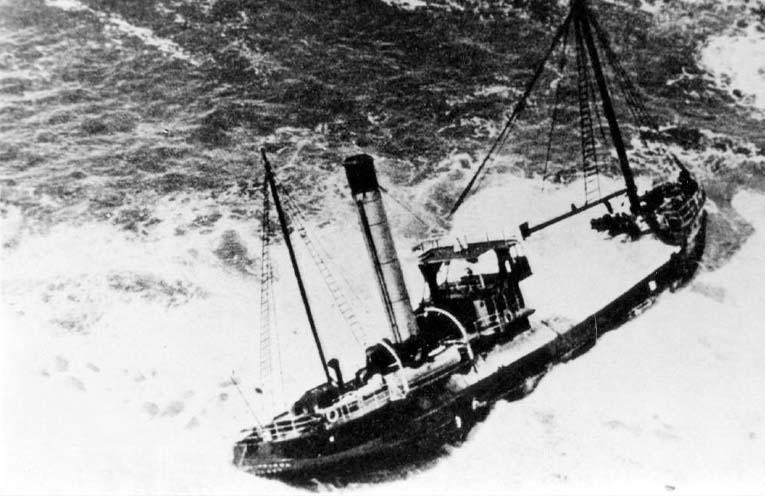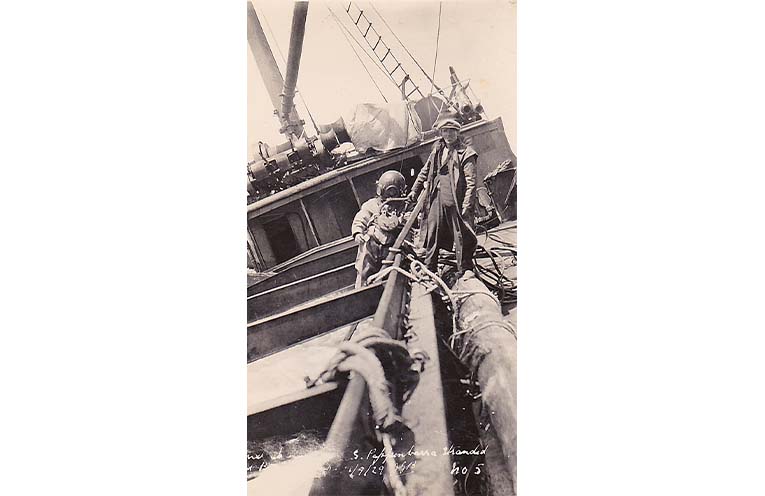
THE safety of ships and their crews was the major concern for all light keepers along the entire coastline.
Because of the increasing maritime traffic from Sydney north and the growing trade inside Port Stephens, the light keepers in the Outer Light were required to be particularly vigilant.
Regardless however of the ongoing efforts of the light keepers shipwrecks continued at an alarming rate.
Only Newcastle had a higher number of shipwrecks, out of ports on the NSW coast, than Port Stephens.
The wreck of the SS Oakland
Just after midnight on 27 May 27, 1903, there were eighteen people on board the coastal steamer ‘SS Oakland’ as she sailed past Nobbys on her way north to the Clarence River.
Specially fitted out to bring molasses in bulk from the northern rivers, the SS Oakland left Newcastle in a heavy swell. Soon after the Point Stephens light was passed she took a list to port which increased in severity until the ship was unable to be steered, finally sinking near Cabbage Tree Island.
By the time SS Bellinger was able to pick up any survivors eleven crew and passengers had drowned.
Shipwrecks continued far too frequently reflecting the extremely dangerous conditions that existed off the coast with the wreck of the Willinga, lost on the reef off Port Stephens Lighthouse in 1908.
The schooner was carrying a cargo of timber sailing from Cape Hawke to Sydney with a crew of five.
The wreck of the Macleay
As written in the Gloucester Advocate on Saturday, 21 October 1911, in a story titled “A Dirty Night”.
“In a report to the secretary to the Department of Navigation, dated October 18, the acting principal keeper at the Point Stephens lighthouse (Mr A.F.W. Gidley) makes the following comments in reference to the wrecked steamer Macleay: – She passed by here going north at 7pm and gave her name by flashing signals. The remark was also flashed that he who was signalling at the time thought that it was going to be a dirty night. I flashed back that by the showing of barometer I did not think it would be anything, although it was very dull at the time, and blowing fresh from the south-east, with a moderate sea. Then he flashed good-night, and I returned the compliment…”
All seemed as it should be and Mr Gidley thought little more of the passing ship.
The Macleay had departed Newcastle for the Clarence River and Grafton with a cargo of coal, three horses and other cargo.
On what turned out to be a fateful night helmsman Charles Petterson sensed danger and shouted that he saw breaking waves but Officer on Duty Henry Goldsmith declared it to be a “school of mullet”.
Petterson attempted to steer away from the approaching reef but it was too late.
The Macleay had hit Boondelbah Island and sank some ten minutes later.
The seventeen man crew attempted to use whatever was floating to assist them but only two survived.
Charles Petterson from Finland, who was at the wheel carrying out the mate’s orders when the Macleay was wrecked and William Swanney, a Scot, the only survivors of the disaster, arrived at Sydney by steamer Hunter from Newcastle on Tuesday.
Bodies were recovered on the beach along with that of a horse which had been attacked by sharks.
By John ‘Stinker’ CLARKE

